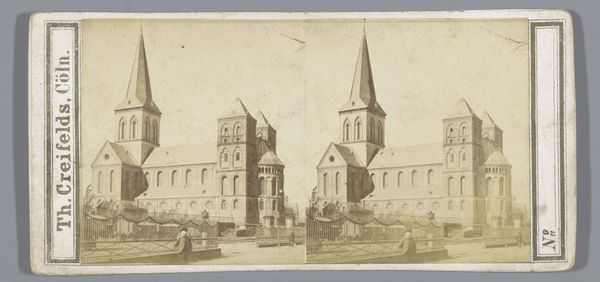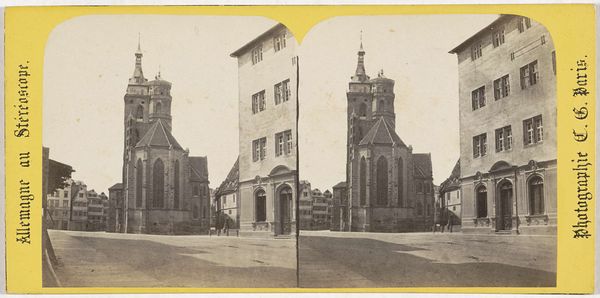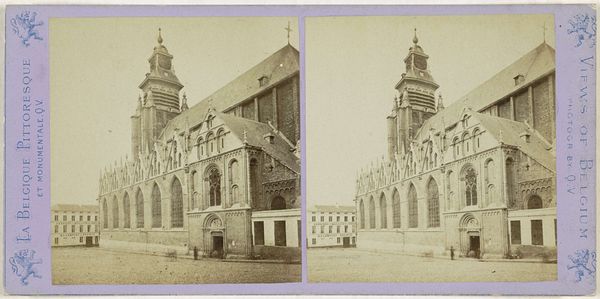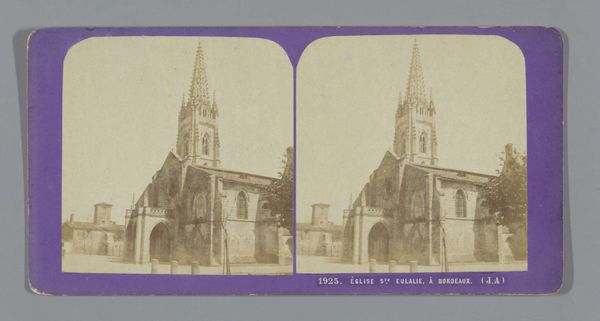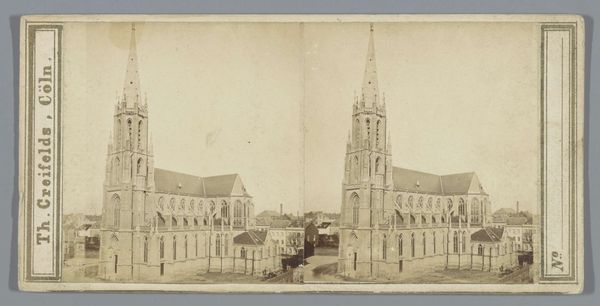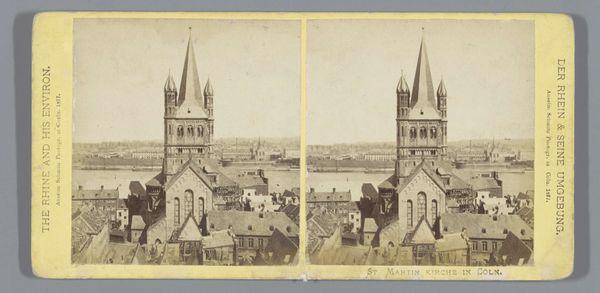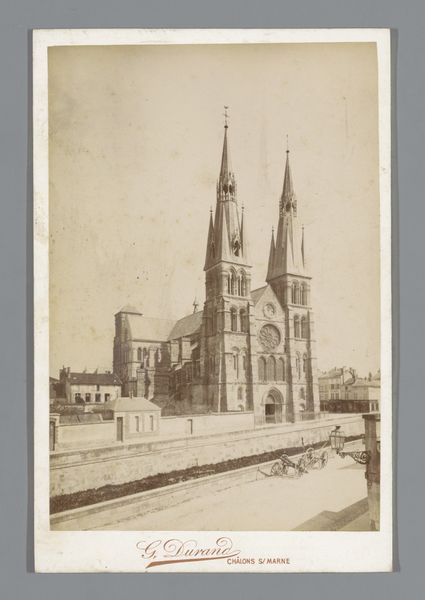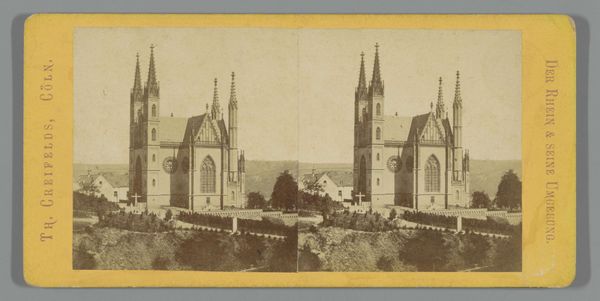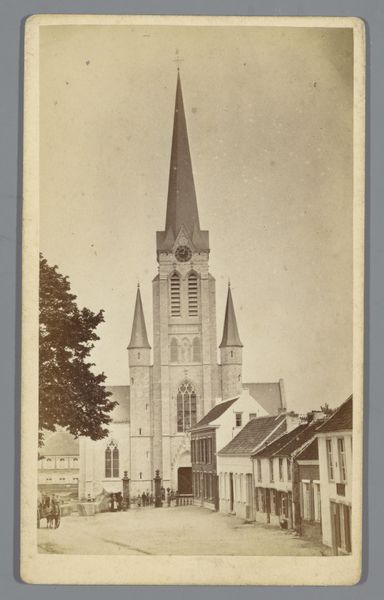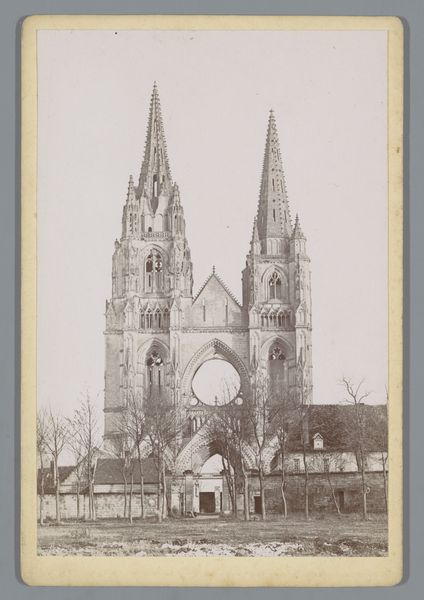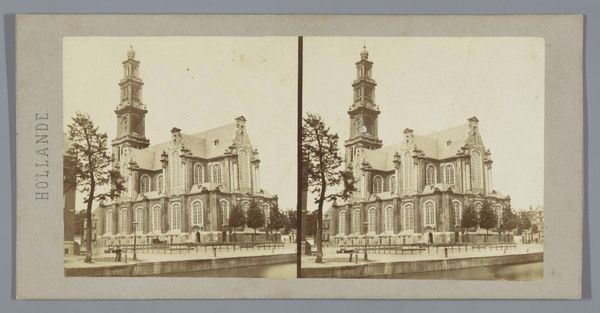
photography, gelatin-silver-print, architecture
#
toned paper
#
photography
#
coloured pencil
#
gelatin-silver-print
#
cityscape
#
watercolor
#
architecture
#
realism
Dimensions: height 86 mm, width 177 mm
Copyright: Rijks Museum: Open Domain
Editor: We're looking at "Brigittakerk in Wenen" by M. Frankenstein & Co., taken sometime between 1868 and 1890. It's a gelatin-silver print, maybe with some added color...It's very architectural. What’s striking to me is that there are two versions of the image right next to each other, almost like a stereoscope card. How do you interpret this work? Curator: That stereoscopic presentation is key! It was meant to offer a three-dimensional experience to viewers. Think about the context: mass tourism was burgeoning, and these images allowed people to "visit" distant locations like Vienna without the expense or time commitment. The photograph presents an idealized cityscape, emphasizing architectural grandeur while carefully framing out any signs of urban poverty or industrialization that might detract from this impression. Consider, too, the role of the Church within the broader social fabric of Vienna at the time. How does the perspective—the viewpoint of the photographer and therefore the viewer—influence the message? Editor: So, it's about making Vienna seem more impressive than it perhaps really was? Sort of a postcard effect before postcards existed? Curator: Precisely! It's image management, if you will. The photographic process itself offered a perceived sense of objectivity and truth. People believed it was a direct representation of reality. That perception made the idealized portrayal even more effective, reinforcing Vienna's position as a culturally significant center. The image isn't just of a church; it's about projecting power, stability, and tradition, things important to Vienna at that time. What about the fence, does it hint at something? Editor: Interesting point...it seems to isolate the church, protecting it almost. Like keeping the chaos of the city outside. Curator: Yes! So we are not only capturing a historical site, but seeing the public staging of it. The photographers made choices that framed a clear image of their Vienna! Editor: That really gives me a new perspective on something that I initally saw as just a pretty church picture. I will remember to dig deeper next time. Thanks! Curator: A pleasure! The devil, as always, is in the details…and the historical context!
Comments
No comments
Be the first to comment and join the conversation on the ultimate creative platform.
